Saguaro Sampler
The saguaro cactus of the Sonoran desert: a symbol of the American west and a familiar feeling when returning to Arizona
I’ve been visiting the greater Phoenix area in Arizona on a regular basis for over a decade and have spent my last three winters there. Whether I drive or fly to Arizona, it is when I see the saguaros that I realize I have arrived.
The saguaro (pronounced suh-wah-oh) is a defining plant of the Sonoran desert, its only natural habitat. The Sonoran desert covers about 12,000 square miles in southwestern Arizona, southeastern California, most of Baja California and the western half of the Sonoran state in Mexico. The saguaro cactus evokes images of America’s old west and is a beautiful and fascinating plant. (All cacti are pretty amazing when you think about how they store water and manage to survive and thrive in the desert.)
A saguaro is very slow-growing. Although saguaros can grow to 40 or 60 feet, a ten-year-old saguaro may be only 1.5 inches tall. The tallest saguaro ever recorded reached a height of 78 feet. The pleats of the saguaro expand and contract like an accordion as it stores and consumes water. In times of plentiful rainfall when saguaros are fully hydrated, they can weigh between 3200 and 4800 pounds. Most of their roots are only four to six inches deep, with the tap root extending two feet. Although the roots aren’t very deep they radiate out as wide as the plant is tall. Saguaros typically live 100 to 200 years.
Saguaros grow at elevations from sea level to 4,000 feet. When I drive through the mountains around Phoenix, I can tell when I’ve reached a certain elevation because the saguaros thin out and disappear.
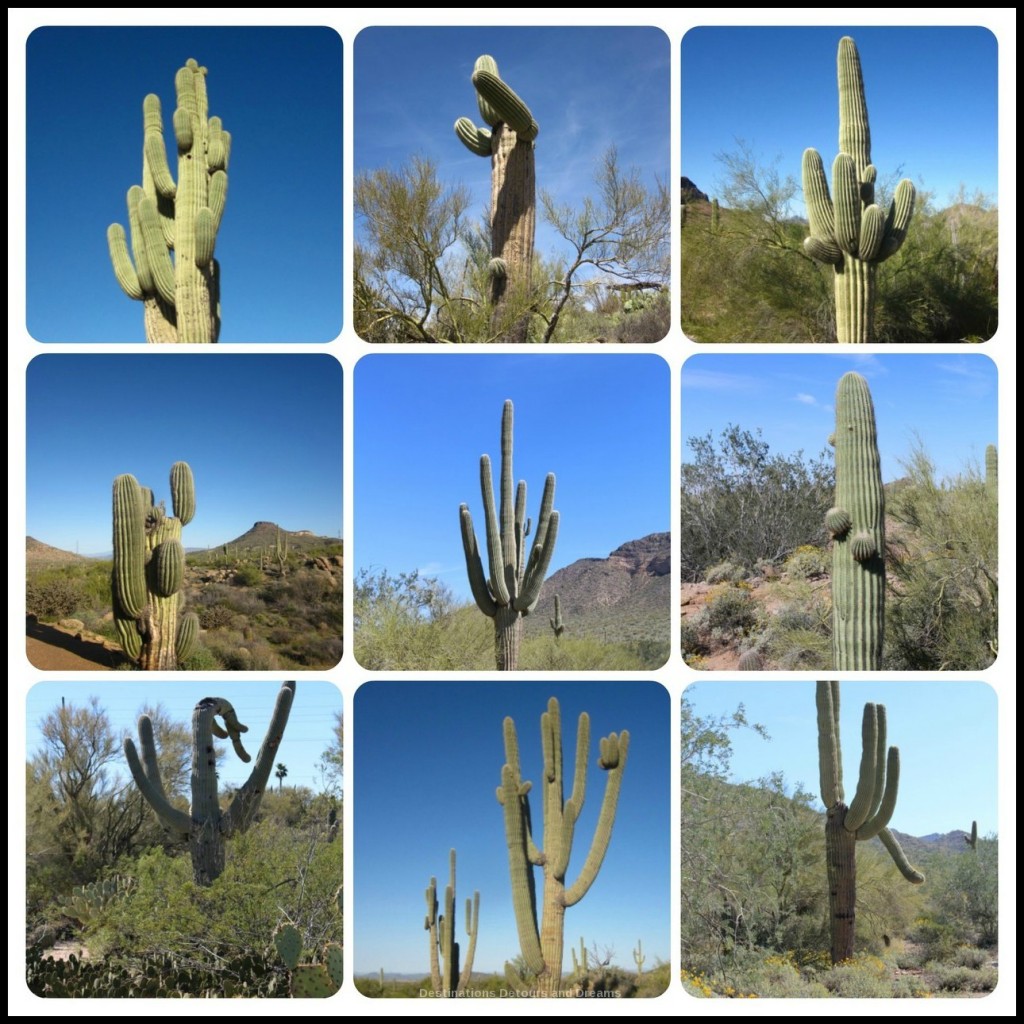
Saguaros grow their first side arm at 75 to 100 years of age. Some may grow more than twenty-five arms, others just one and some grow no arms at all. It is interesting to observe the various shapes the arms twist themselves into. Some seem to be pointing out directions. Scientists do not know why saguaros vary so much. Another mystery of the desert.
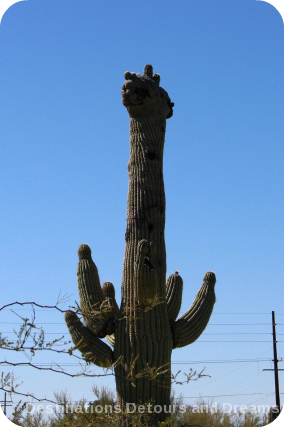
Another mystery and anomaly is the crested saguaro. A crested saguaro is a mature saguaro whose top grows in a broad, fan shape. It is a relatively rare occurrence. Although there has been speculation as to what causes the cresting, including the possibility of frost damage or lightning strikes, scientists do not know why some saguaros crest.
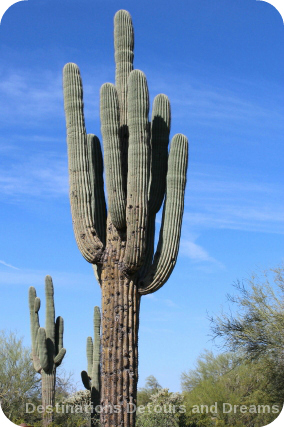
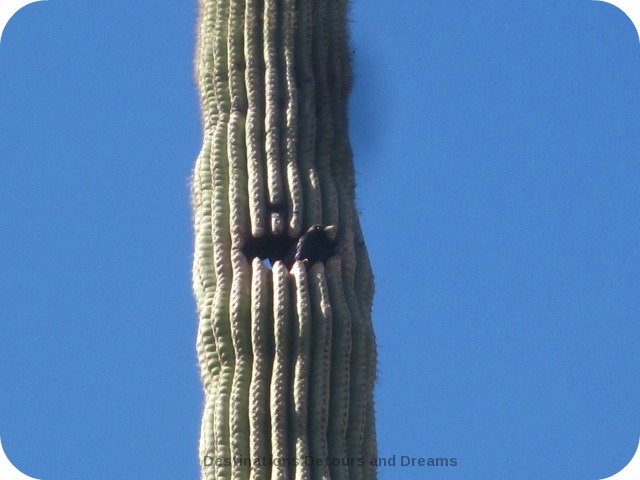
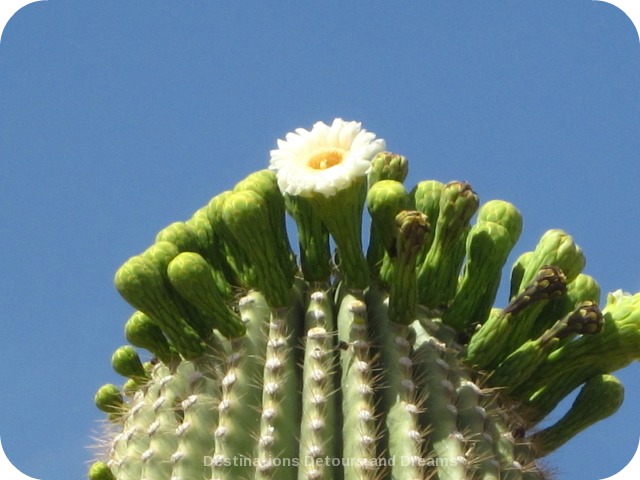
The saguaro blooms in May or June, sometimes as early as April. White flowers appear atop the cactus and its arms. The blooms open up at night and last through midday. The saguaro flower is the state flower of Arizona.
After the flowers have been pollinated, they mature into bright red fruit with thousands of black seeds. The fruit is a source of food for animals, birds and humans. Indigenous tribes have been using the saguaro for food, shelter and implements as long as they’ve lived in the desert. They harvest the fruit for making wines, jams and jellies.The seeds can be ground into flour. Harvest typically starts in late June.
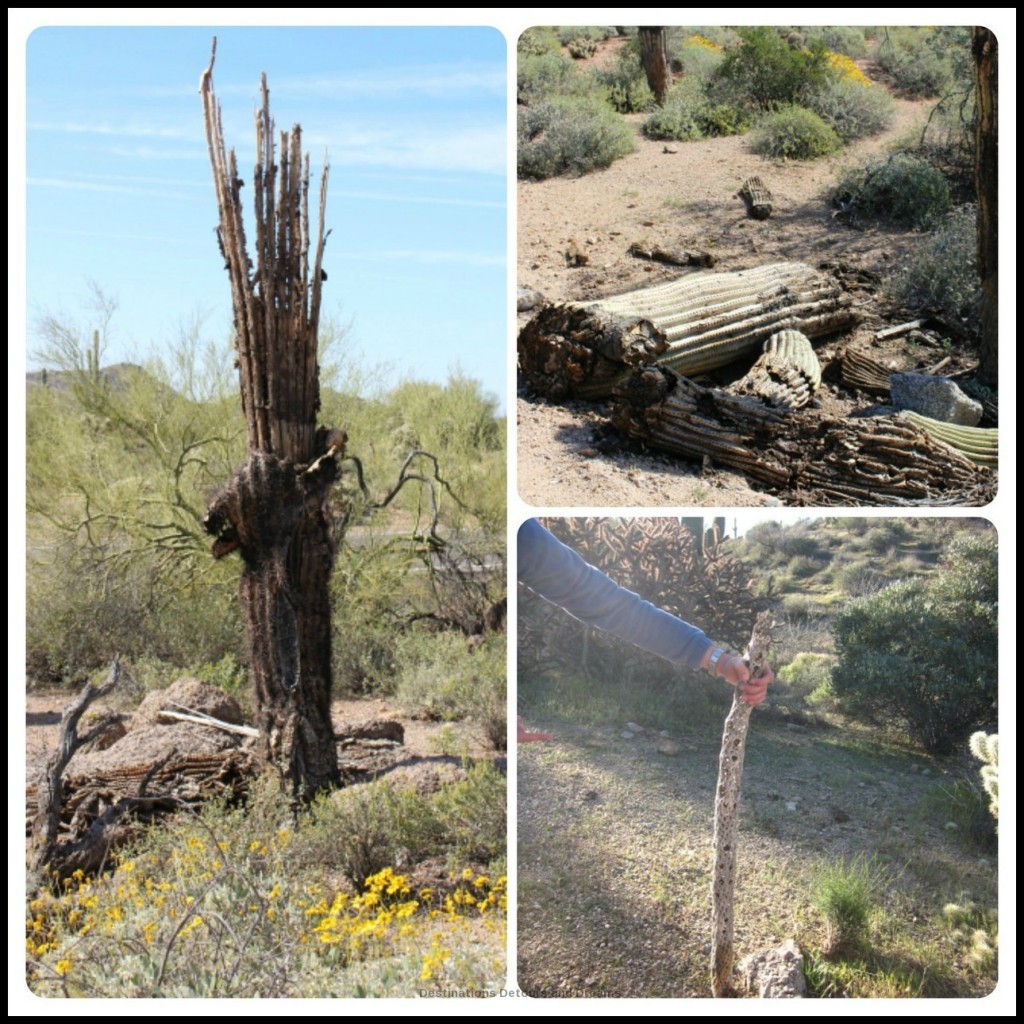
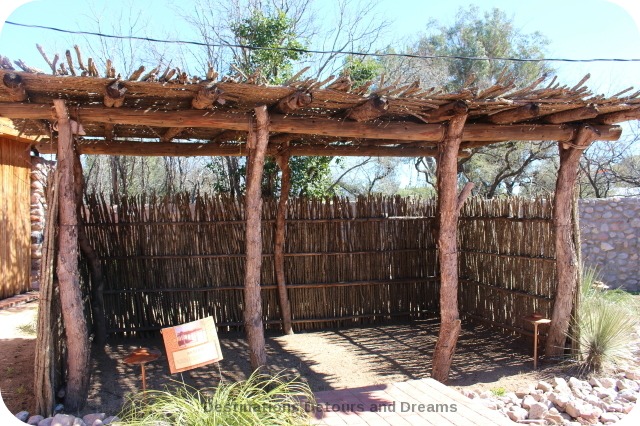
Saguaros are not listed as threatened or engendered but Arizona has strict regulations about their harvesting, collection or destruction.
Saguaros are readily visible anywhere one travels through the Sonoran Desert, particularly in parks and preserve areas. A few of the places one can learn more about saguaros include the Desert Botanical Garden in Phoenix, the Boyce Thompson Arboretum in Superior, the Arizona-Sonoran Desert Museum in Tucson and the Tohono-Chul Garden in Tucson. Bike, auto and walking trails through Saguaro National Park, to the east and west of Tucson, provide opportunities to view saguaros and other desert plant life.
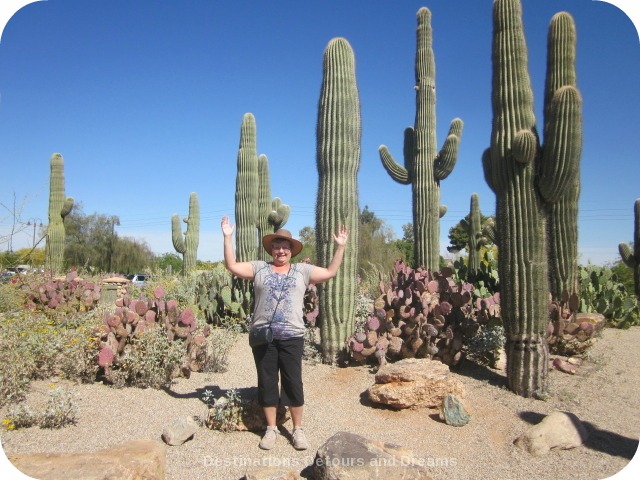
What images does the saguaro evoke for you? Is there a plant that defines a place or symbolizes home for you?
PIN IT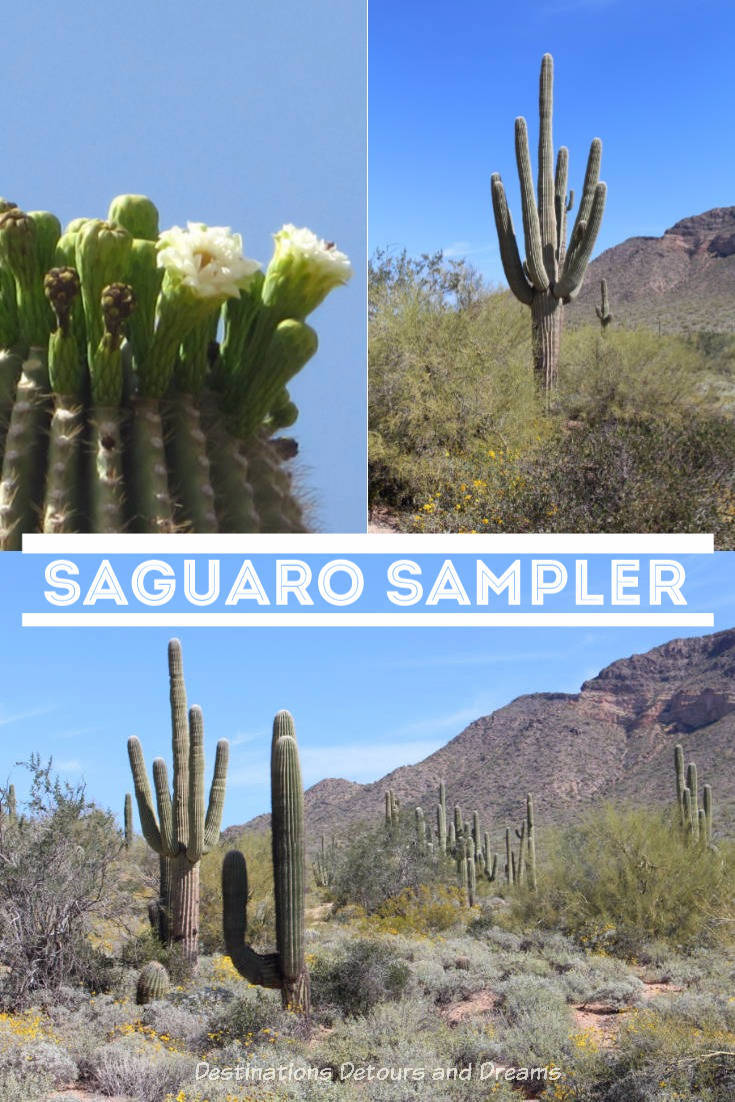

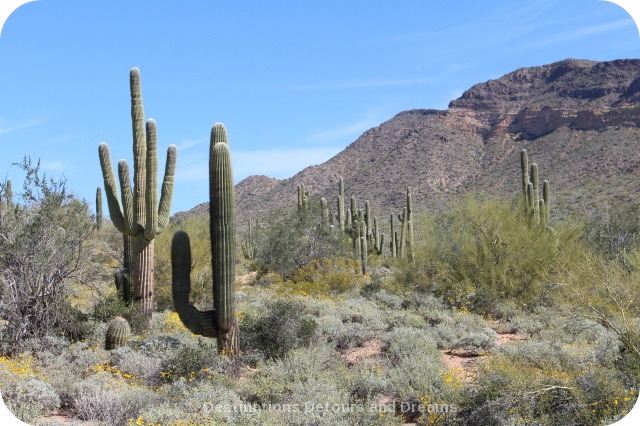
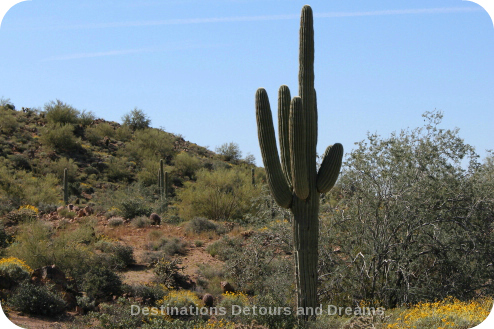
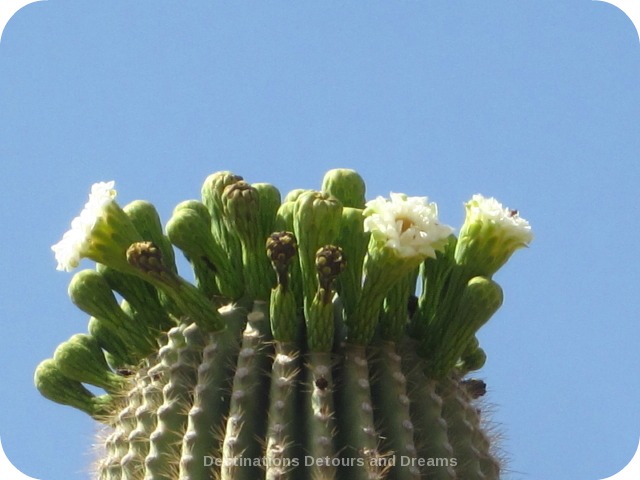
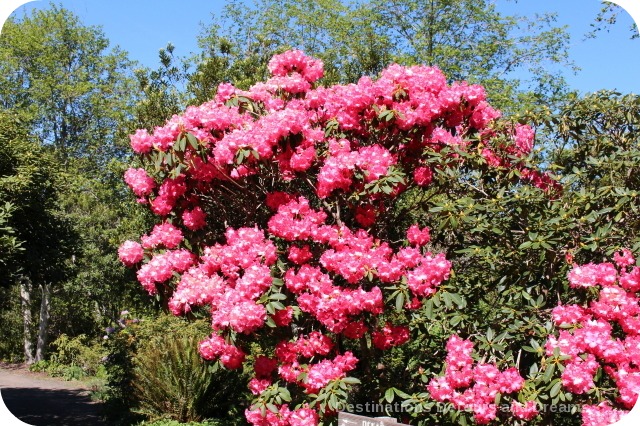

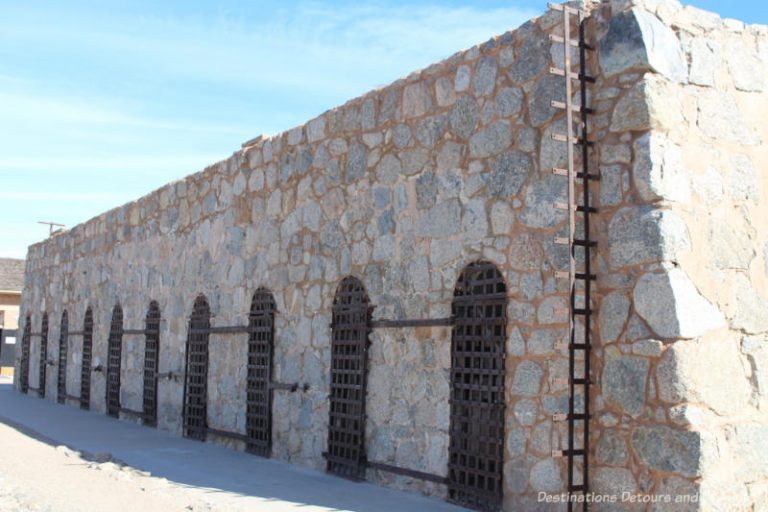
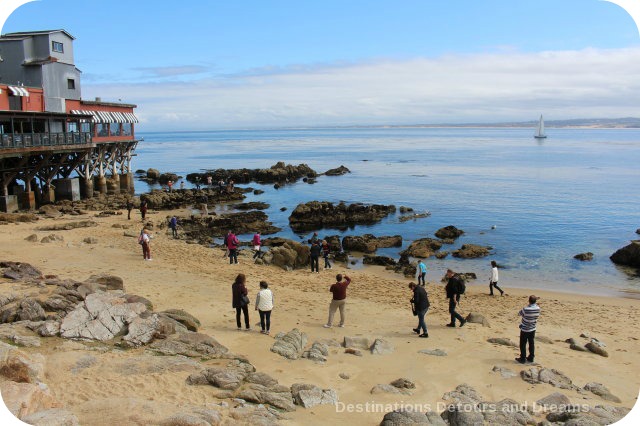
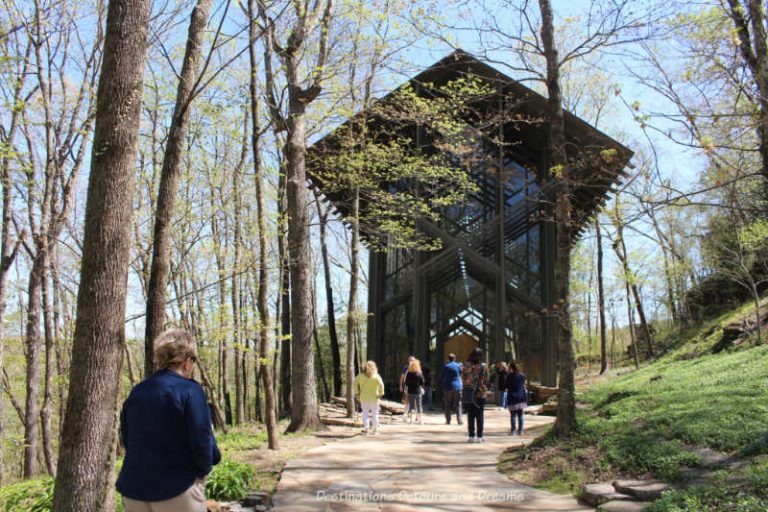
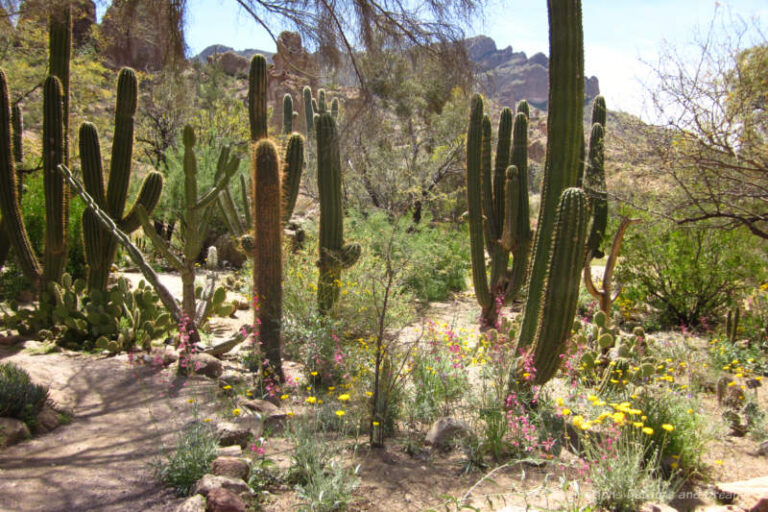
Wow! These are impressive saguaro!! I also had no idea that the flower was the state flower for Arizona! Interesting article!
Thanks Jacquie. I never tire of seeing the saguaros.
I never knew Saguaro were so slow-growing! Now I’ll have new respect next time I see one with several arms. Those flowers are so beautiful. I love the variety and mystery to be found in the desert.
Meredith, I too love the variety and mystery to be found in the desert.
Whenever I am driving between my home in Prescott and Phoenix, I always welcome the first sight of the saguaro cacti. I knew they were slow growing but 1 1/2 inches in 10 years is majorly slow! We often look for the one with the most arms and wonder why it achieved them.
Beth, it does make one wonder why some saguaros grow so many arms and others only one. I was surprised to learn that even the scientists don’t have the answer.
I actually never knew those were called saguaros. I was, however obsessed with cactus plants as a kid.
I think it is so interesting how varying the saguaros are. I absolutely never knew that they don’t even usually grow an arm until they are close to 100. Wow, it makes you really appreciate your history when you see them. Thank you for providing all the great pictures.
Glad you enjoyed the photos Erica. I find saguaros fascinating and discovered as I prepared this post how many photos I’ve taken of them over the years.
One and half inches tall after 10 years! That’s incredible. The pictures of the saguaro are beautiful. I’m a big fan of desert landscape. I especially love the colors.
Ken, I don’t think I appreciated how many shades of green there are until I visited the Sonoran desert.
Great photos. Have to admit I had no idea they were called Saguaro and that it’s the state flower for Arizona.
Thanks Catarina. I never tire of looking at the saguaros.
How amazing that saguaros act hosts for birds. I adore the photograph of the flower blooming at the top of the saguaro – so pretty.
I find it fascinating how birds can nest in cacti. The spines of the cactus provide protection from larger animals.
oh wow! Is that what it is called? I had no idea they were called Saguaro. We learn everyday.
Interesting article and Great Photos Donna x
Thanks. Glad you enjoyed the article and photos.
Donna, I love your photos – you really have an eye for what appeals. You look like you’re having so much fun doing the imitation of the saguaro but I don’t think the birds would have been fooled. The flowers are lovely but since the saguaros are so tall, you wouldn’t really be able to appreciate their beauty, would you?
Lenie, you do have to pay attention and really look to see the saguaro flowers – because there are on the top of the cactus and because they are so fleeting. But the flowers often point a bit to the side and are visible and stunning.
What a great post. I am always surprised at the beauty of the desert; your posts has changed my perception of it. I had always thought of it as being lifeless and dull. Thanks for sharing.
William, I too had always thought of the desert as lifeless and dull until I started visiting the Sonoran desert in Arizona. It’s a good reminder to be careful about preconceptions.
Let me first say love your saguaro imitation Donna – you are a natural! Seriously, I’m familiar with the image but had absolutely no idea how interesting this plant is, certainly not that it lives to 100 – 200 years! It’s always amazing to learn the stories behind such things because it helps to cultivate even greater respect for nature. Thanks!
The saquaro are really impressive. I have seen them only once and that was in Tuscon but loved them. They seem to have a personality but I am thinking that is because they all look like they have arms. The desert is an incredible place to wander.
Tim, the saguaro do indeed seem to have a personality. Each one unique.
Hi Donna – the desert seems a miracle. It is astounding that so many varieties of plants and wildlife thrive in that environment. Our guide at the Botanical garden also educated us that the accordian design of the cactus allows half of the plant to remain in shade. Fascinating!
You make a great Saguara by the way. We may ask you to show us your imitation at the next dinner party. 🙂
Cindy
Cindy, I agree that the desert seems a miracle. I could probably do a few variations of saguaro imitations, but only of ones with two arms.
I find the saguaro interesting. I saw a few during my cross country trip a couple years ago. I should have took a few pictures.
Jason, I too find the saguaro interesting. I guess you could figure that out given I wrote a post about them.
I wasn’t familiar with the term saguaros, but they’re quite majestic looking. The pictures are great Donna and capture even the isolated parts of the mid-west beautifully.
Thanks. Majestic is a good term for saguaros, except maybe for the ones you come across with arms twisted into odd positions.
Gosh, I didn’t realize this icon of the west had such a cool name and so many fascinating properties. incredible that they can thrive so long in such a harsh environment. I’ll be so much more appreciative the next time I watch a western flick!